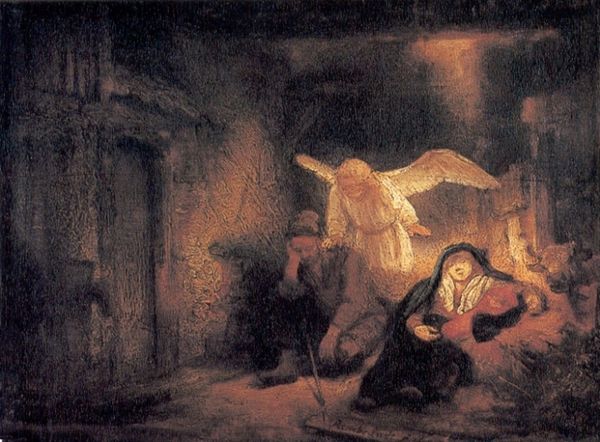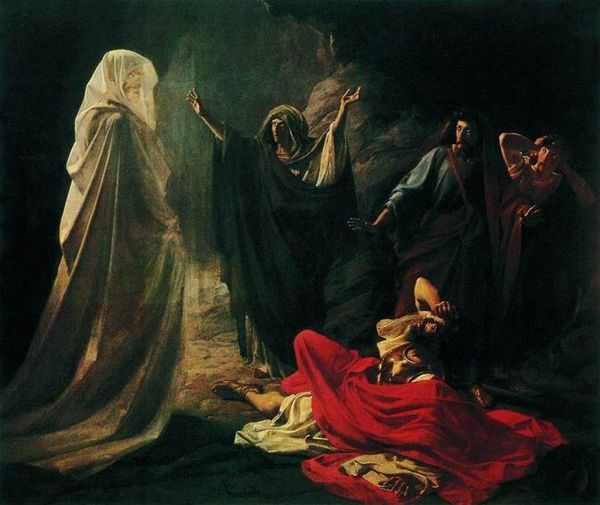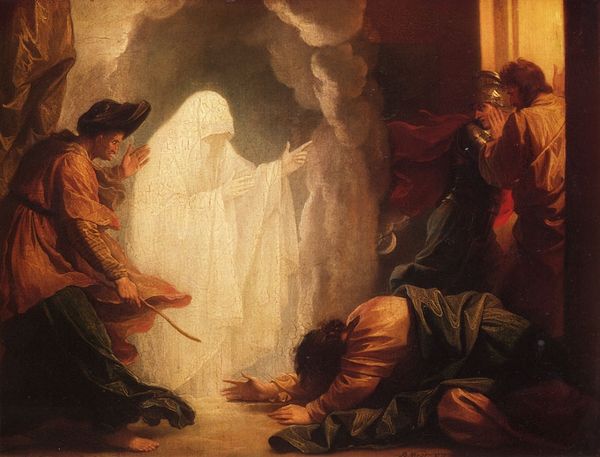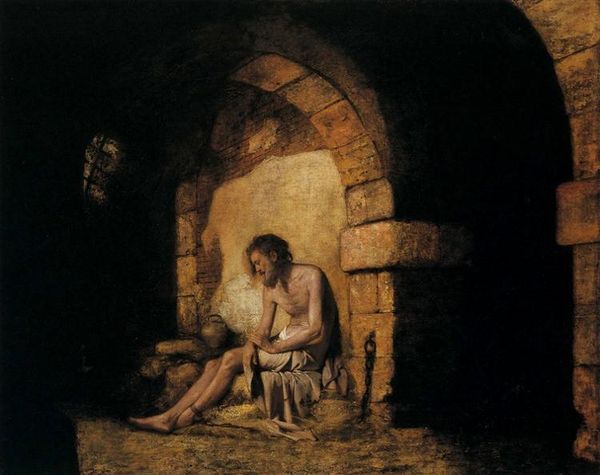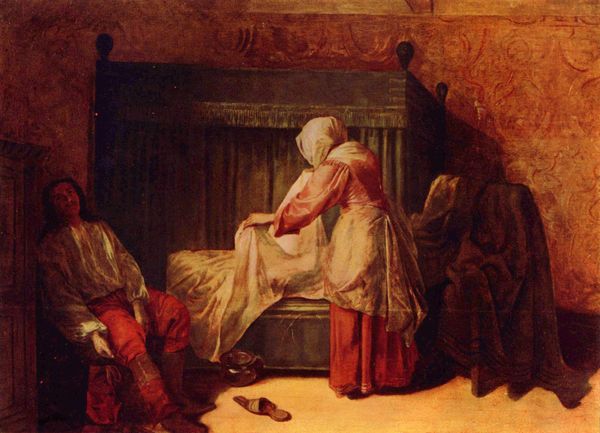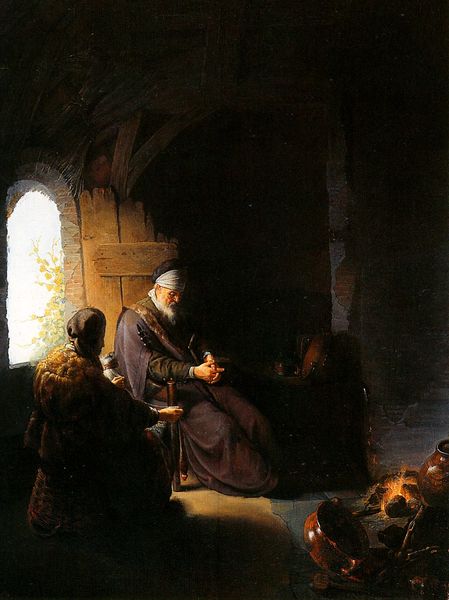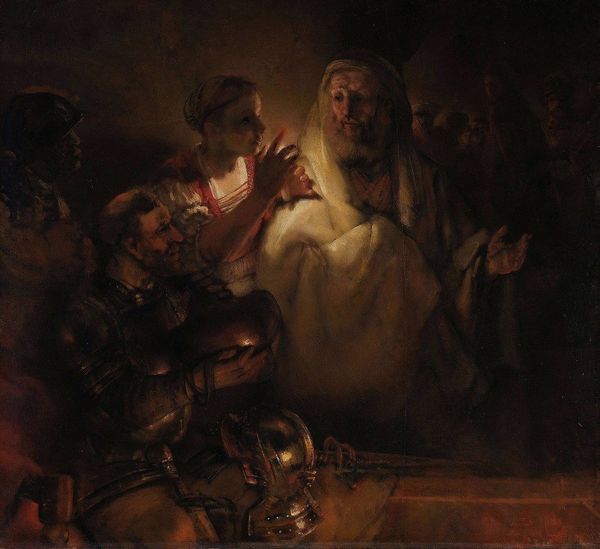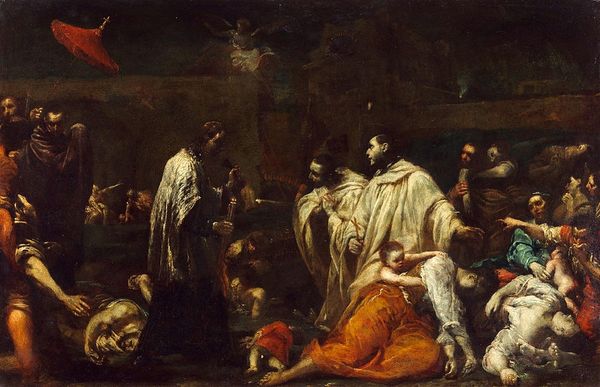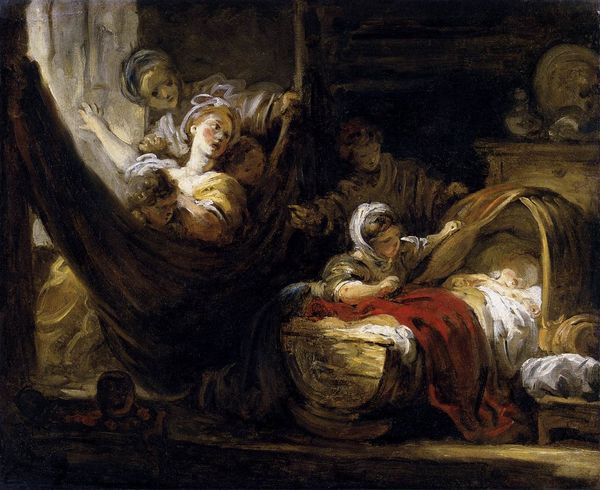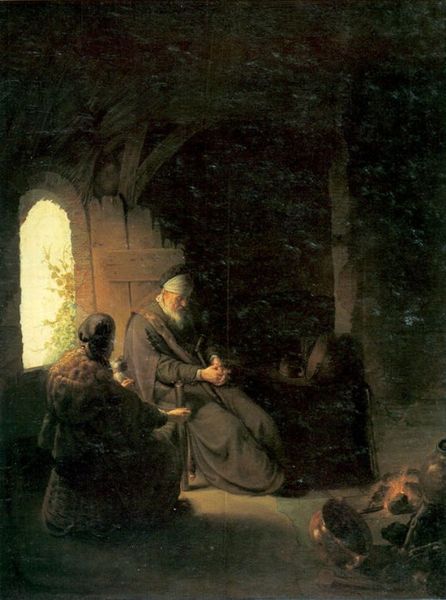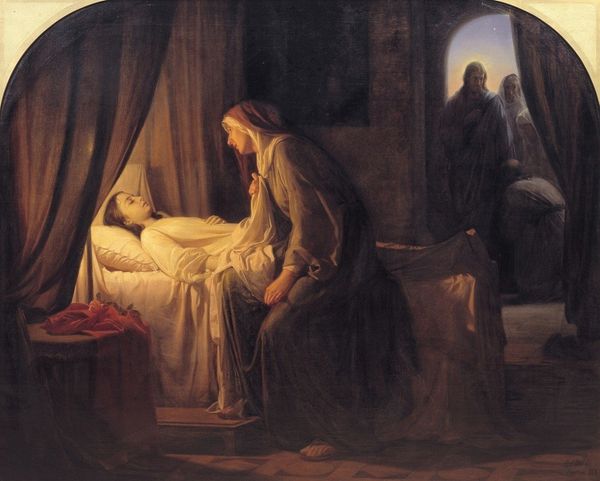
oil-paint
#
narrative-art
#
oil-paint
#
figuration
#
oil painting
#
romanticism
#
chiaroscuro
#
history-painting
Dimensions: 73.5 x 92.5 cm
Copyright: Public domain
Eugène Delacroix created "The Prisoner of Chillon," now in the Louvre, using oil on canvas to render a scene of confinement and despair. The painting's somber palette, dominated by dark browns and muted yellows, sets a tone of oppressive gloom. The composition is stark: a prisoner stretches, manacled, towards a sliver of light, while another lies prone, seemingly lifeless. Delacroix's brushwork, loose and expressive, adds to the emotional intensity. We can see that the architecture is rendered with a kind of gestural freedom. The painting's structure, with its sharp contrast between light and shadow, creates a stage for the drama of human suffering. Delacroix uses these elements—tone, texture, and composition—to destabilize traditional heroic narratives, offering instead a raw, unflinching look at human vulnerability. This formal choice invites us to consider the cultural codes that valorize freedom, and question their meaning in the face of such stark realities.
Comments
No comments
Be the first to comment and join the conversation on the ultimate creative platform.
